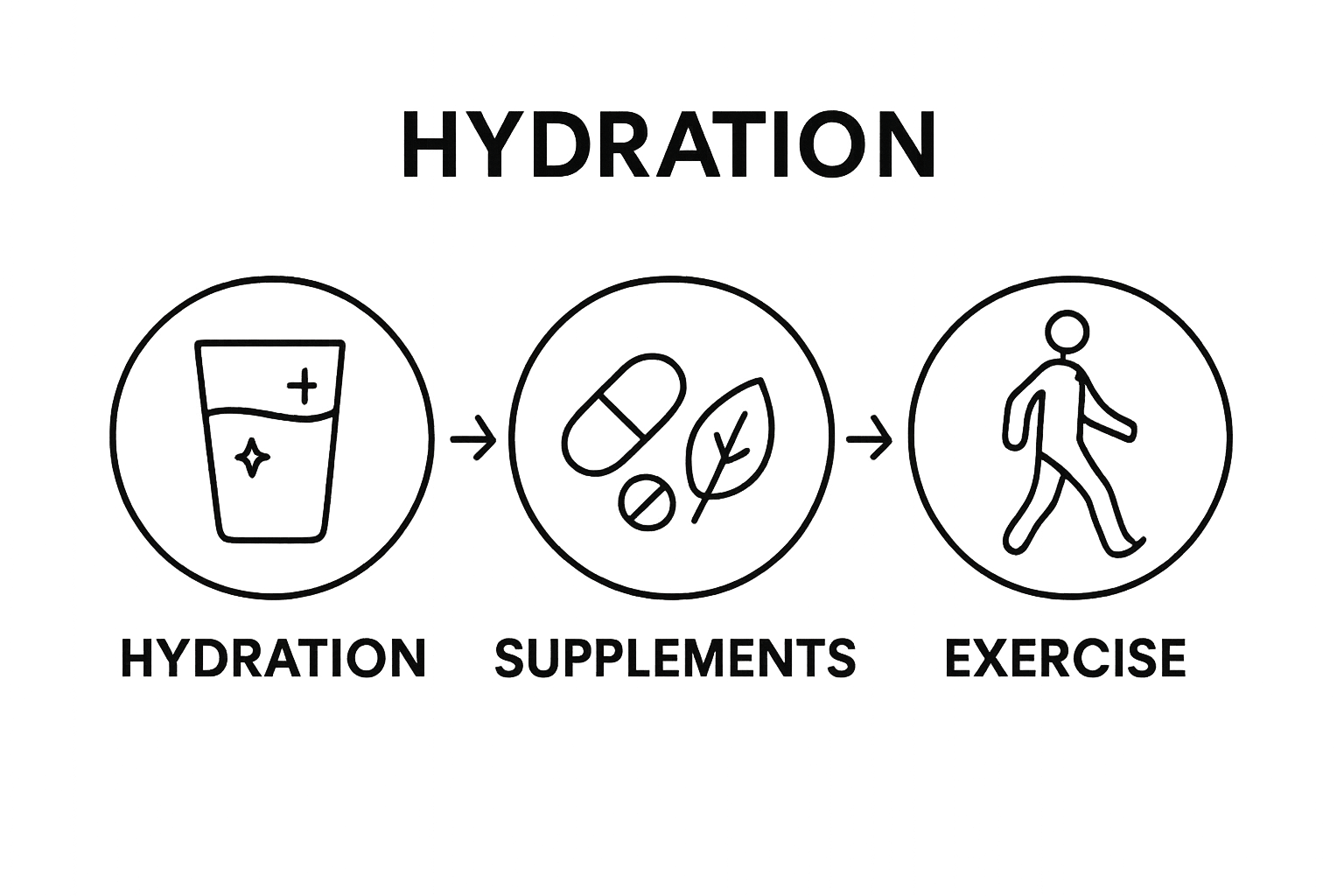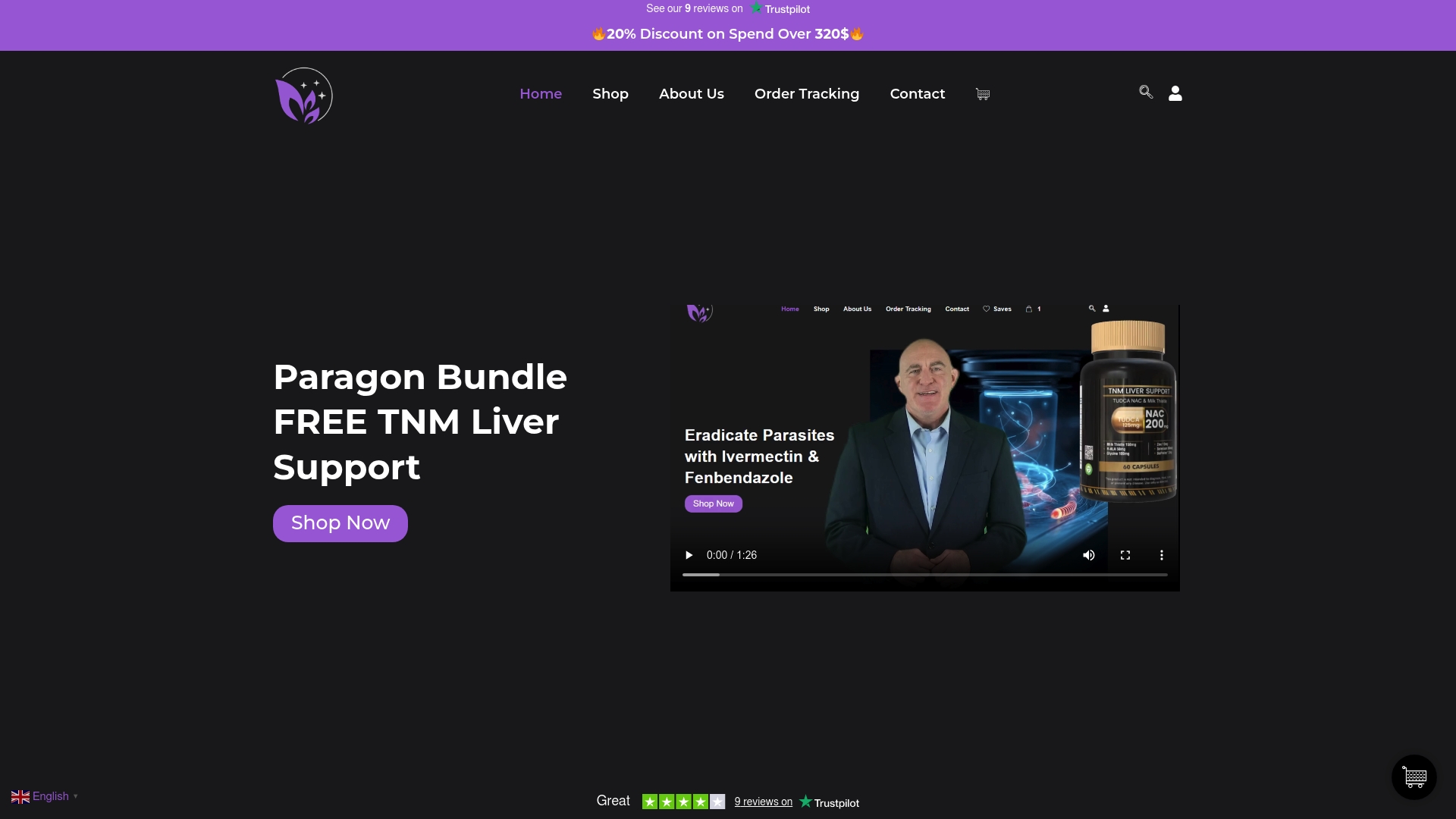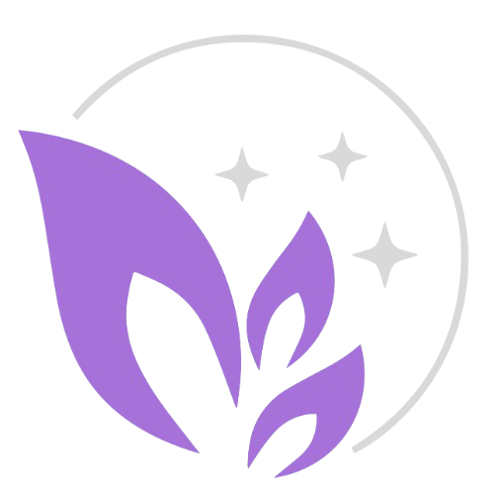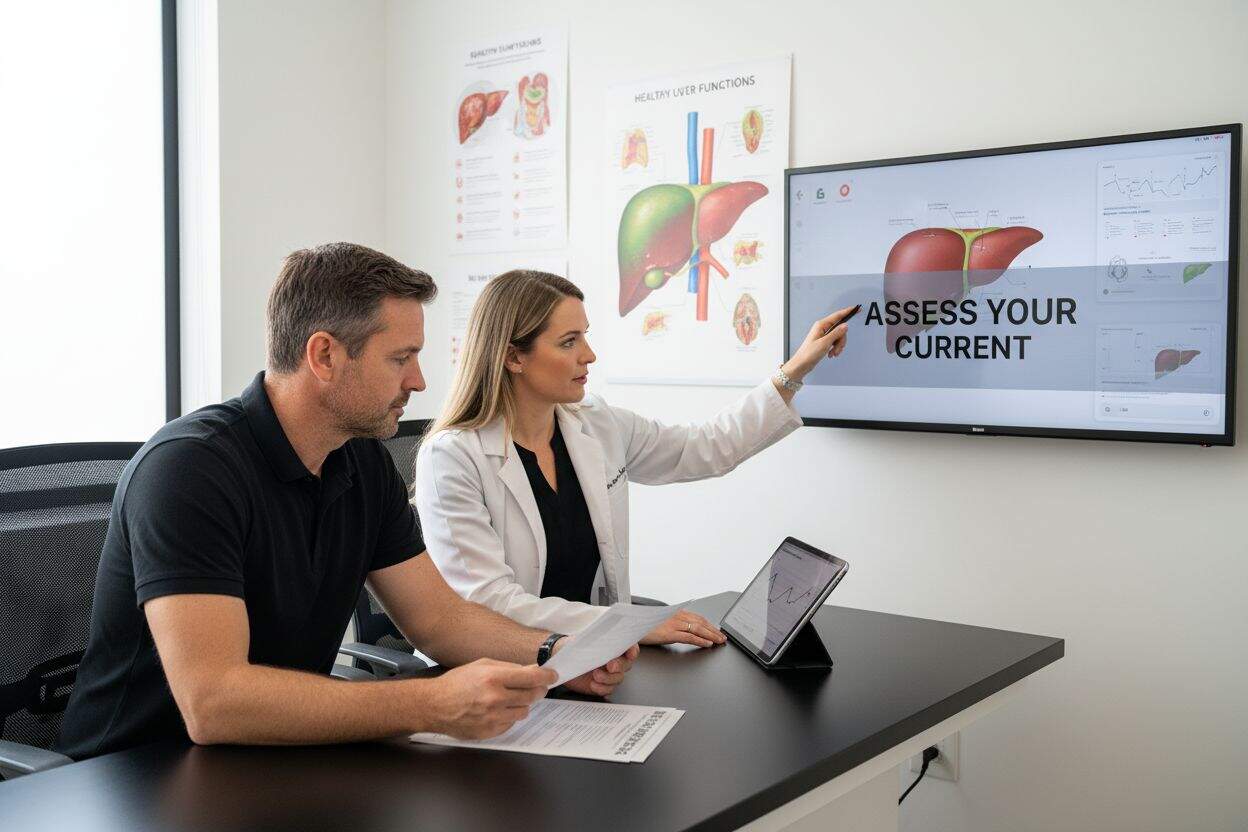Everyone’s heard about liver detox diets, but how do you actually know if they work? Most people focus on fancy supplements or extreme cleanses, yet the liver quietly handles over 500 vital functions in your body every single day without much help. The real key to unlocking your liver’s best performance comes from a simple checklist that most detox guides completely skip.
Table of Contents
- Step 1: Assess Your Current Liver Health
- Step 2: Create A Healthy Detox Diet Plan
- Step 3: Incorporate Natural Detox Supplements
- Step 4: Stay Hydrated With Clean Water
- Step 5: Implement Regular Exercise Routines
- Step 6: Monitor And Evaluate Your Progress
Quick Summary
| Key Point | Explanation |
|---|---|
| 1. Assess your liver health first | Start with a thorough medical evaluation including liver function tests to guide your detox strategy. |
| 2. Follow a nutrient-rich detox diet | Consume whole foods like cruciferous vegetables and lean proteins to boost liver function and reduce inflammation. |
| 3. Stay hydrated with filtered water | Drink 8-10 glasses of filtered water daily and incorporate herbal teas to support detoxification processes. |
| 4. Incorporate regular exercise | Engage in at least 150 minutes of moderate exercise weekly to enhance liver metabolism and detoxification. |
| 5. Monitor your progress regularly | Keep track of your health changes and schedule medical check-ups every 3-4 months to evaluate liver function. |
Step 1: Assess Your Current Liver Health
Understanding your current liver health is the critical first step in any effective natural detoxification process. Your liver silently performs hundreds of essential functions, filtering toxins, metabolizing nutrients, and supporting overall bodily health. Before embarking on a liver detox journey, you need a comprehensive assessment that provides insights into your organ’s current condition and potential areas of concern.
To begin your assessment, schedule a comprehensive medical evaluation with your healthcare provider. During this consultation, request specific liver function tests that provide a detailed snapshot of your liver’s performance. Read more about our detailed liver health guide to understand what these tests entail. These tests typically measure key enzyme levels like alanine aminotransferase (ALT), aspartate aminotransferase (AST), and alkaline phosphatase (ALP) which indicate liver inflammation or potential damage.
Your assessment should include both clinical tests and a comprehensive personal health evaluation. Pay attention to potential symptoms that might signal liver stress, such as unexplained fatigue, skin discoloration, abdominal pain, or persistent digestive issues. Document any medications, alcohol consumption, dietary habits, and lifestyle factors that could impact liver function. A thorough self-assessment helps your healthcare provider create a personalized detoxification strategy.
Here is a checklist table to help you organize and track your assessment during the initial phase of liver detoxification.
| Assessment Area | What to Look For | How to Document |
|---|---|---|
| Liver Function Tests | ALT, AST, ALP enzyme levels | Request bloodwork, note results |
| Personal Health Evaluation | Symptoms: fatigue, skin changes, digestive issues | Daily health journal |
| Medication & Alcohol Use | Current prescriptions, alcohol or substance intake | List in document |
| Dietary Habits | Types of foods consumed, processed foods, sugar | Track meals and snacks |
| Family History | Incidence of liver disease in relatives | Record details |
| General Lifestyle Factors | Sleep, stress, physical activity | Weekly log |
Key indicators to discuss with your medical professional include:
- Comprehensive metabolic panel results
- Hepatitis screening
- Alcohol and substance use history
- Dietary and nutritional assessment
- Family history of liver disease
By conducting a meticulous initial assessment, you establish a baseline for your liver health and create a targeted approach for natural detoxification. This foundational step ensures that your subsequent detox efforts are safe, strategic, and tailored to your unique physiological needs.
Step 2: Create a Healthy Detox Diet Plan
Designing a strategic nutrition plan is fundamental to supporting your liver’s natural detoxification processes. A well-crafted diet can provide essential nutrients that enhance liver function, reduce inflammation, and support cellular repair. Learn more about natural detoxification strategies to complement your dietary approach and maximize liver health.
Your detox diet should focus on whole, nutrient-dense foods that actively support liver metabolism and cellular cleansing. Cruciferous vegetables like broccoli, cauliflower, and brussels sprouts are particularly powerful, containing compounds that stimulate liver enzyme production and help neutralize potentially harmful substances. Incorporate high-quality proteins such as wild-caught fish, organic chicken, and plant-based protein sources like lentils and quinoa to provide amino acids crucial for liver repair and regeneration.
Hydration plays a critical role in supporting liver detoxification.
 Drink filtered water throughout the day and include herbal teas like dandelion root, milk thistle, and green tea, which contain natural compounds that support liver function. Eliminate processed foods, refined sugars, alcohol, and excessive caffeine, as these substances can burden your liver and impede its natural detoxification mechanisms.
Drink filtered water throughout the day and include herbal teas like dandelion root, milk thistle, and green tea, which contain natural compounds that support liver function. Eliminate processed foods, refined sugars, alcohol, and excessive caffeine, as these substances can burden your liver and impede its natural detoxification mechanisms.
Key dietary recommendations for liver detox include:
- Consume organic, pesticide-free produce
- Include sulfur-rich foods like garlic and onions
- Prioritize antioxidant-rich berries and leafy greens
- Minimize inflammatory foods like processed meats and refined carbohydrates
- Choose healthy fats from sources like avocados, olive oil, and nuts
Remember that a liver detox diet is not about extreme restrictions but about nourishing your body with wholesome, healing foods. Gradually transition into this nutrition plan, listen to your body, and be patient with yourself as you support your liver’s natural regenerative capabilities.
Step 3: Incorporate Natural Detox Supplements
Natural supplements can provide targeted support for liver detoxification, complementing your dietary efforts and enhancing your body’s innate healing mechanisms. Discover more about safe detoxification approaches to optimize your liver health strategy. The right combination of supplements can accelerate cellular repair, reduce oxidative stress, and support your liver’s complex metabolic processes.
Milk thistle emerges as a powerhouse supplement for liver health, containing silymarin, a potent compound that protects liver cells and promotes regeneration. According to clinical research, milk thistle demonstrates remarkable hepatoprotective properties, helping neutralize toxins and reduce inflammation. Pair this with N-acetyl cysteine (NAC), an amino acid that boosts glutathione production, your body’s master antioxidant, which plays a crucial role in neutralizing harmful compounds and supporting cellular detoxification.
Additional powerful liver-supportive supplements include turmeric with its active compound curcumin, which provides anti-inflammatory benefits, and dandelion root, known for stimulating bile production and supporting digestive health. Selenium and vitamin B complex also contribute to liver function, helping metabolize toxins and supporting cellular energy production. When selecting supplements, prioritize high-quality, third-party tested products from reputable sources.
Use this table to compare the key benefits and actions of the most referenced natural liver support supplements discussed in the article.
| Supplement | Main Active Component | Primary Action on Liver | Additional Notes |
|---|---|---|---|
| Milk Thistle | Silymarin | Protects and regenerates liver cells | Strong clinical support; hepatoprotective |
| N-Acetyl Cysteine (NAC) | NAC | Boosts glutathione and detox capacity | Master antioxidant support |
| Turmeric | Curcumin | Reduces inflammation | Anti-inflammatory; supportive for detox |
| Dandelion Root | Inulin, sesquiterpene | Stimulates bile and digestion | Mild diuretic effect |
| Selenium | Selenium mineral | Supports toxin metabolism | Essential trace element |
| Vitamin B Complex | B vitamins | Enhances energy and liver metabolism | Supports cellular repair |
Key considerations for supplement integration:
- Start with low doses and gradually increase
- Consult with a healthcare professional before beginning any supplement regimen
- Monitor your body’s response and adjust accordingly
- Choose organic, bioavailable supplement forms
- Rotate supplements to prevent potential tolerance
Remember that supplements are most effective when integrated holistically with a nutrient-rich diet, adequate hydration, and lifestyle practices that support liver health. Your supplementation strategy should be personalized, adaptive, and responsive to your body’s unique needs and healing journey.
Step 4: Stay Hydrated with Clean Water
Hydration represents a critical yet often overlooked component of liver detoxification, serving as the primary mechanism for flushing toxins and supporting cellular regeneration. Learn more about effective detox strategies to complement your hydration efforts and enhance overall liver health. Water acts as a fundamental transport system, helping your liver efficiently process and eliminate harmful substances while maintaining optimal metabolic functions.
Filtered water is essential for a successful liver detox, as it minimizes exposure to additional contaminants that could burden your liver’s filtration system. Invest in a high-quality water filtration system that removes chlorine, heavy metals, and potential microplastics. Aim to consume approximately 8-10 glasses of purified water daily, adjusting intake based on your body weight, activity level, and environmental conditions. Incorporating herbal teas like dandelion, milk thistle, and green tea can provide additional liver-supporting benefits while contributing to your daily hydration needs.
Enhance your hydration strategy by introducing electrolyte-rich beverages and water-dense foods that support cellular hydration. Coconut water, fresh cucumber juice, and watermelon provide natural electrolytes and additional nutrients that complement your liver’s detoxification processes. Consider adding a pinch of himalayan salt or fresh lemon to your water to improve mineral absorption and support metabolic functions. Be mindful of your body’s signals and drink water consistently throughout the day, rather than consuming large quantities at once.

Key hydration recommendations for liver detox:
- Start your day with a glass of room temperature water
- Use a marked water bottle to track daily intake
- Reduce or eliminate dehydrating beverages like alcohol and excessive caffeine
- Listen to your body’s thirst signals
- Consume water-rich fruits and vegetables
Successful hydration during liver detox is about consistency, quality, and mindful consumption. Your water intake should feel natural and supportive, not forced or overwhelming. Pay attention to your body’s responses and adjust your hydration strategy accordingly.
Step 5: Implement Regular Exercise Routines
Exercise serves as a powerful catalyst for liver detoxification, stimulating metabolic processes and enhancing the body’s natural elimination mechanisms. Learn more about holistic detox approaches to complement your exercise strategy and maximize liver health. Physical activity triggers a cascade of physiological responses that support cellular cleansing, reduce inflammation, and improve overall metabolic efficiency.
Moderate-intensity cardiovascular exercises play a crucial role in liver health. Research demonstrates that consistent physical activity can significantly improve liver enzyme profiles and metabolic function. Aim for 150 minutes of moderate exercise per week, incorporating activities like brisk walking, swimming, cycling, or dance classes. These movements stimulate lymphatic circulation, enhance oxygen delivery, and support the liver’s natural detoxification pathways. Strength training complements cardiovascular exercise by building muscle mass, which increases metabolic rate and supports more efficient toxin processing.
Integrate a diverse exercise routine that includes flexibility and stress-reduction practices like yoga and tai chi. These movements not only improve physical mobility but also activate the parasympathetic nervous system, reducing cortisol levels that can impede liver function. Short, consistent exercise sessions are more beneficial than sporadic, intense workouts. Begin with 20-30 minute sessions and gradually increase duration and intensity as your fitness level improves. Listen to your body, allowing for rest and recovery between exercise sessions.
Key exercise recommendations for liver detox:
- Start with low-impact activities if you’re new to exercise
- Prioritize consistency over intensity
- Mix cardiovascular, strength, and flexibility training
- Stay hydrated before, during, and after exercise
- Include rest and recovery days in your routine
Remember that exercise is a journey of self-discovery and healing. Your body will communicate its needs, so approach your fitness routine with patience, compassion, and a commitment to gradual, sustainable progress.
Step 6: Monitor and Evaluate Your Progress
The final stage of your liver detoxification journey involves comprehensive tracking and assessment to ensure the effectiveness of your holistic approach. Explore our detailed guide on natural health monitoring to supplement your progress evaluation strategy. Monitoring is not about perfection, but about understanding your body’s unique response and making informed adjustments to support ongoing liver health.
Regular medical check-ups are crucial for tracking your liver’s progress. Clinical assessments typically include comprehensive blood tests measuring liver enzyme levels, including ALT, AST, and GGT, which provide insight into liver function and potential inflammation. Schedule these evaluations every 3-4 months during your detoxification process, working closely with a healthcare professional who understands functional medicine and holistic health approaches. Self-monitoring is equally important. Keep a detailed health journal documenting changes in energy levels, digestive function, skin condition, sleep quality, and overall well-being.
Beyond clinical tests, pay attention to subtle bodily signals that indicate liver healing. Improved skin clarity, reduced bloating, more stable energy throughout the day, and enhanced mental focus are positive indicators of successful liver detoxification. Use technology like health tracking apps to log your symptoms, diet, exercise, and supplement intake. This data provides a comprehensive view of your progress and helps identify patterns or potential areas needing adjustment. Consider incorporating periodic non-invasive imaging techniques like ultrasound to visually assess liver health when recommended by your healthcare provider.
Key progress monitoring recommendations:
- Conduct comprehensive blood panel tests quarterly
- Maintain a detailed health and symptom tracking journal
- Schedule regular consultations with healthcare professionals
- Track objective and subjective health indicators
- Be patient and compassionate with your body’s healing process
Remember that liver detoxification is a nuanced, individual journey. Progress is not linear, and each person’s healing trajectory differs. Approach your monitoring with curiosity, openness, and a commitment to long-term wellness rather than immediate perfection.
Ready for Real Liver Detox Results? Take Charge of Your Health Journey
You have already taken the first step by learning how to detox your liver naturally. If you are facing stubborn fatigue, sluggish metabolism, and digestive discomfort, know you are not alone. The quest for a truly effective liver cleanse can feel confusing, especially when choosing high-quality, safe supplements that work. Real change only happens when you pair researched detox strategies—like those discussed in this guide—with trusted, pharmaceutical-grade solutions. Your body deserves more than guesswork.

Now is the moment to move from education to action. Explore our best-selling liver support supplements designed to help you cleanse, repair, and protect your liver using ingredients like TUDCA, NAC, and proven detox complexes. Find the purest parasite cleanse options to maximize your results. Join a wellness community that believes in transparency, real results, and your right to vibrant health. Start making changes that matter today at mahoneyinter.com.
Frequently Asked Questions
What are the signs that my liver needs detoxification?
Common signs that your liver may need detoxification include unexplained fatigue, skin discoloration, abdominal pain, persistent digestive issues, and changes in energy levels.
How can I create a healthy detox diet for my liver?
A healthy detox diet should include whole, nutrient-dense foods such as cruciferous vegetables, high-quality proteins, antioxidant-rich fruits, and healthy fats while eliminating processed foods, refined sugars, and excessive caffeine.
What natural supplements can support liver detoxification?
Natural supplements like milk thistle, N-acetyl cysteine (NAC), turmeric, and dandelion root can support liver detoxification by protecting liver cells, boosting antioxidant levels, and stimulating bile production.
How much water should I drink for effective liver detoxification?
Aim to consume approximately 8-10 glasses of filtered water daily, adjusting based on your body weight, activity level, and environmental conditions, to support your liver’s detoxification processes.





